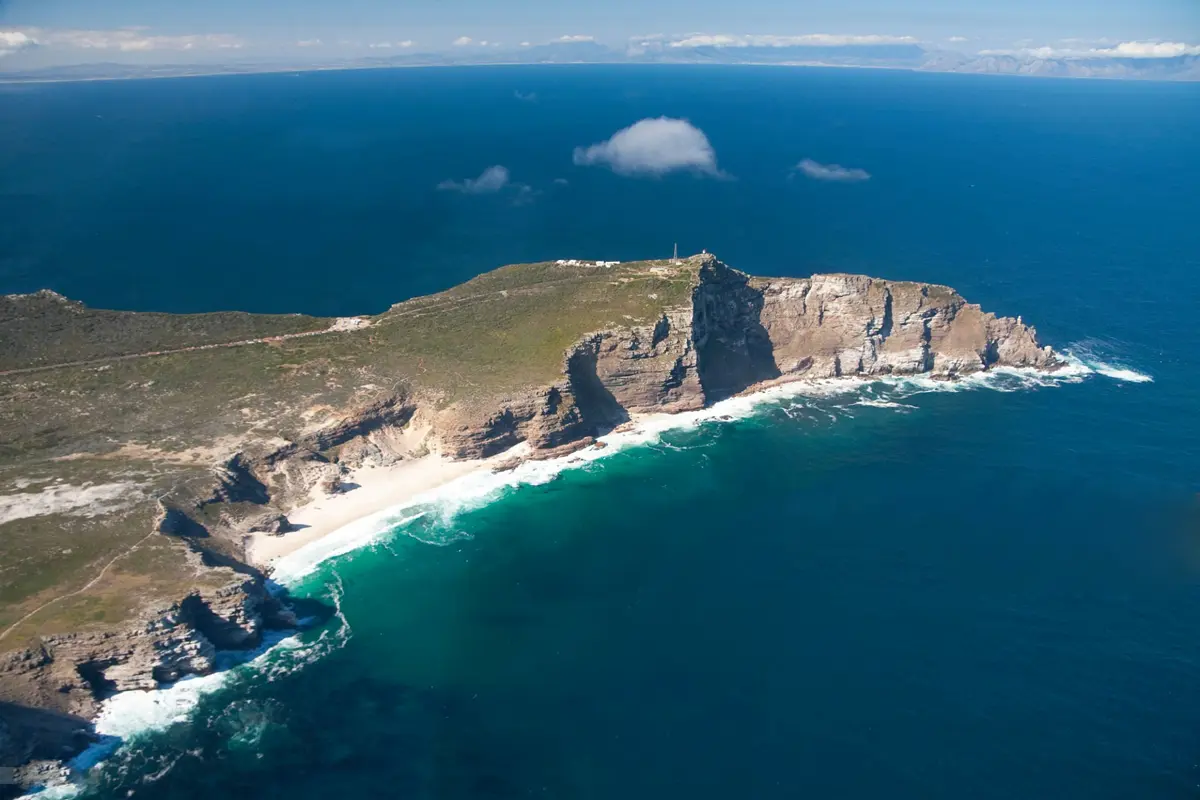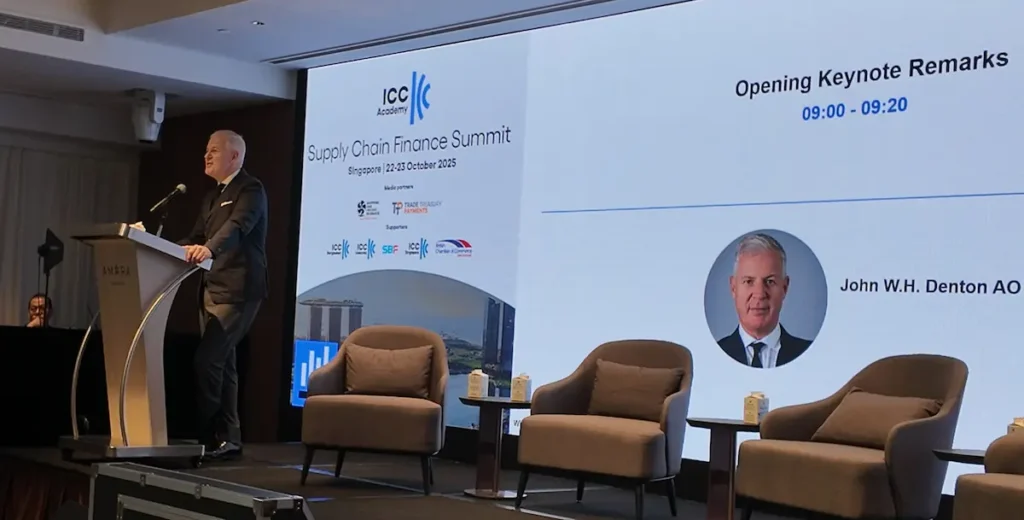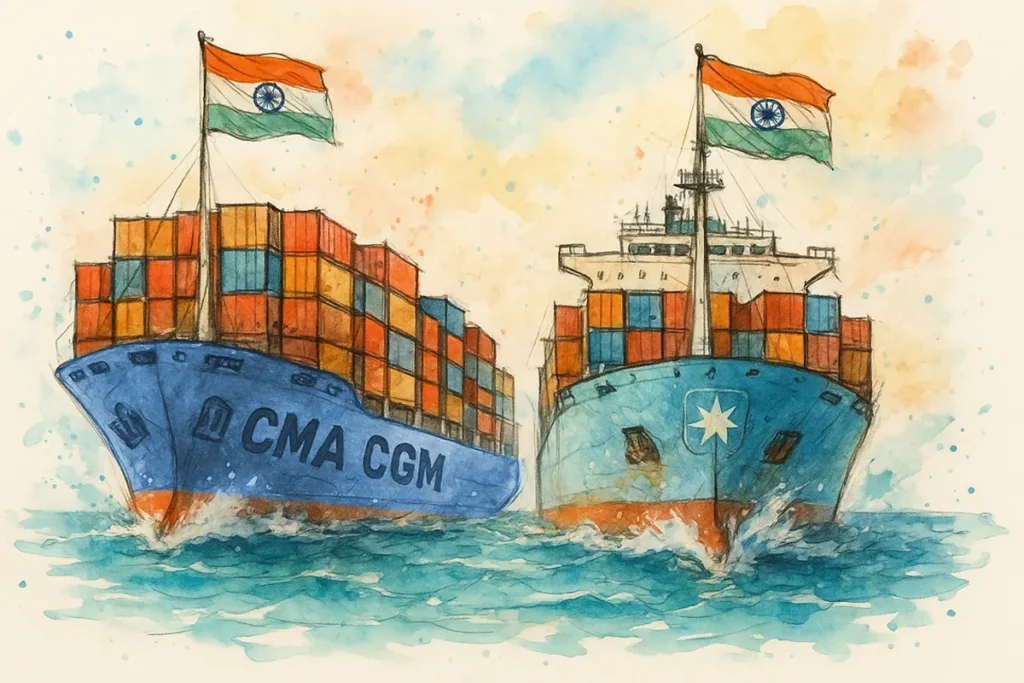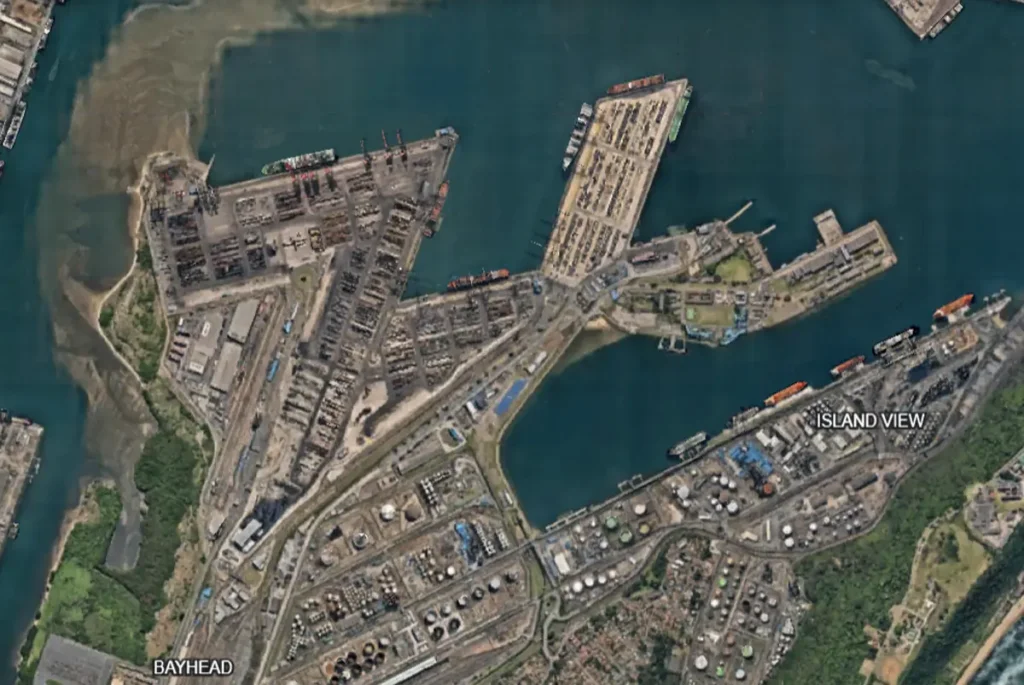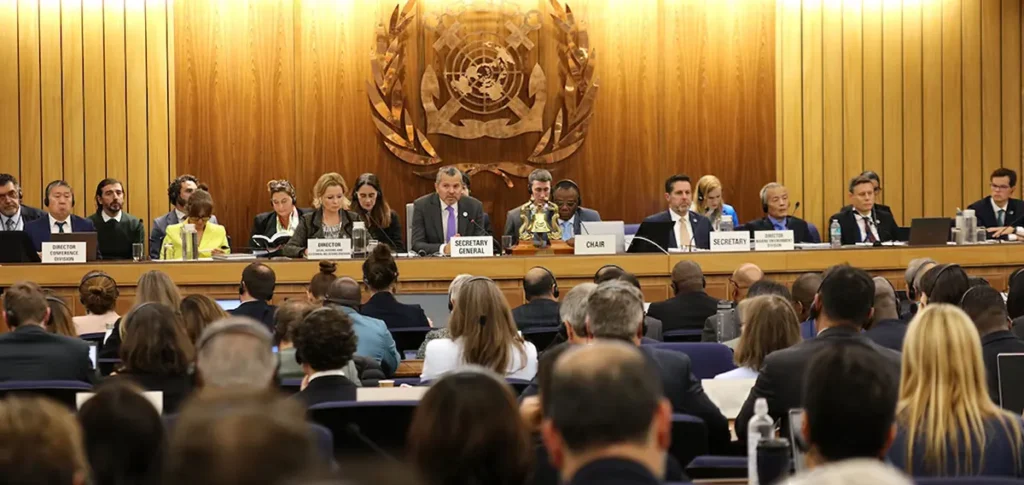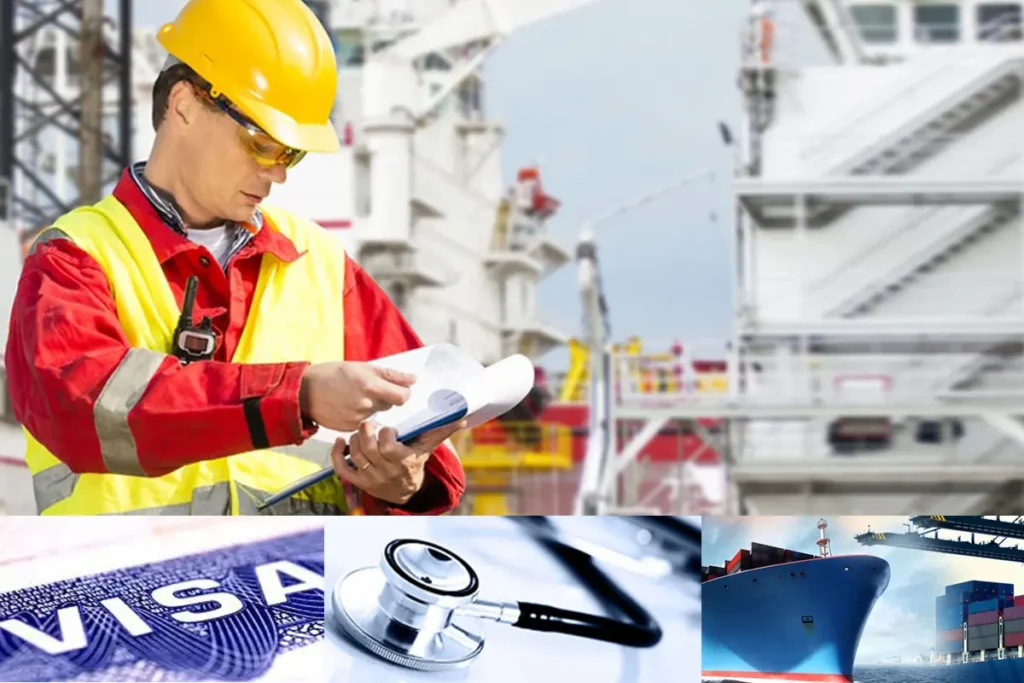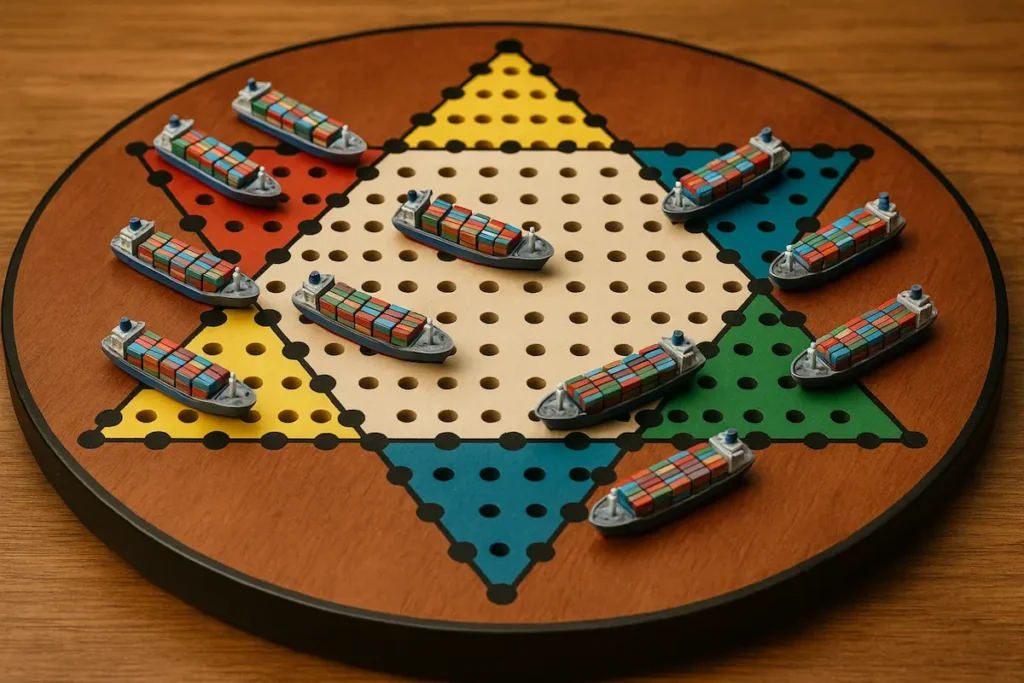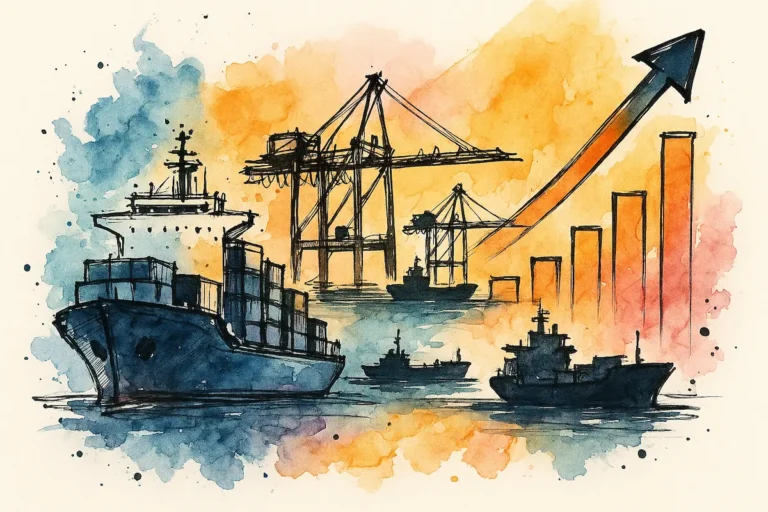As we have seen, in the last 5 odd years, the global shipping and maritime industry has gone through several disruptions both natural and otherwise.. Pandemics, canal blockages, droughts restricting transit, attacks on cargo ships, bad weather, ship fires, and containers falling off ships..
Of these disruptions, there seems to be a growing trend of containers falling off ships, especially in 2024 around the Cape of Good Hope on the back of increased ship movements..
This increase in traffic around the Cape of Good Hope is linked to disruptions in the Red Sea area due to attacks on cargo ships necessitating this rerouting of ships from Asia to Europe/North & South American East Coast and vice versa..
The rerouting has reached significant proportions with ships across all segments on the route from Asia-Europe and Asia-Atlantic trade diverting their journey around the Cape of Good Hope..


As per UNCTAD, vessel transits through the Suez Canal fell 42% compared with the peak in 2023 while the gross tonnage of vessels arriving at the Cape of Good Hope increased by 85% (7-day moving average) in March 2024 compared to the first half of December 2023) with containership arrivals by gross tonnage increased by a remarkable 328% as shown here..
Aside from these ships having to travel longer distances adding about 12 additional days on a journey from China to Europe, this rerouting also leads to higher operational costs..
In addition, these ships are facing a threat that may be new to them..
They have to come face to face with the deadly Agulhas Current around the Cape of Good Hope resulting in some spectacularly dangerous and rough seas, something some of these ships and crew may have not experienced..
Since the rerouting began in December 2023, there have been 4 severe cases where container ships have been caught in these deadly currents and lost containers overboard
- Jul 2024 – CMA CGM Benjamin Franklin (18,000 TEU) – 44 containers overboard and 30 containers damaged on board
- Aug 2024 – CMA CGM Belem (13,000 TEU) – 99 containers overboard
- Sep 2024 – MSC Antonia (7,000 TEU) – 46 containers overboard
- Oct 2024 – MSC Taranto (14,000 TEU) – 5 empty containers
As per SAMSA (South African Maritime & Safety Authority), in recent months, there have been several incidents involving the loss of containers at sea, with around 200 containers going overboard and over 350 containers damaged on board various ships – Benjamin Franklin, CMA CGM Belem, Maersk Stepnica, Rio Grande Express, MSC Antonia and recently MSC Taranto..
Not just container ships, but other ships have also been affected by these heavy ocean conditions including the m.v.Ultra Galaxy which suffered a cargo shift, started listing, ran aground off the West Coast of South Africa, and was eventually ripped into pieces.. Salvage work is underway to remove the wreckage..
This slideshow requires JavaScript.
The grounding happened in early July as the Southern hemisphere’s wintry weather fully set in along with choppy winds and rough seas..
What is the Agulhas Current and why is it dangerous
For centuries, sailors have considered the waters off Africa’s southern tip to be treacherous with Portuguese explorers originally terming Cape of Good Hope as Cape of Storms..
Africa’s Southernmost tip is Cape Agulhas which is at the converging point where two oceans, the Indian Ocean and the Atlantic Ocean meet.. The currents from the warm Indian Ocean and the cold Atlantic Ocean give rise to turbulent and unpredictable waters..
As per NASA, “Warm water arrives from the east on the fast-moving Agulhas Current, which flows along the east coast of Africa. Meanwhile, the cooler, slower Benguela Current flows north along Africa’s southwestern coast. That means navigating around the tip of South Africa requires mariners to sail against ocean currents on both sides of the continent.
Shipwrecks are relatively common in the turbulent water of Agulhas Bank, where colliding currents regularly spin off rogue waves, eddies, and meanders.”
Study on container losses overboard
As global volumes and ship sizes increase, container losses are once again becoming more frequent, especially since the rerouting via the Cape of Good Hope is reaching worrying proportions from environmentalists, insurance companies, and industry stakeholders..
In their latest comprehensive study on the impact of weather on containers on board ships, stack collapses released in Feb 2024, Gard, one of the largest marine insurers in the world, highlights the increasing risks associated with global containerized trade, especially under adverse weather conditions..
The study examined container stack collapses and losses from 2016 to 2021, combining Gard’s claims data with meteorological insights..
The findings emphasize that severe weather, such as wave heights exceeding 7 meters (equivalent to gale-force winds), significantly contributes to these incidents, even though such conditions are infrequent..
It found that vessels in rough seas for only 5% of the time accounted for around 50% of container loss incidents with the risk further amplified by the size of modern container vessels..
The study found that Ultra-large container vessels (ULCVs), capable of carrying over 15,000 TEUs, experience a 9% incident rate of stack collapses compared to 1% for smaller vessels..
This suggests that larger vessels, which carry containers stacked up to ten levels high, are more vulnerable to cascading failures during severe storms.. Moreover, prolonged exposure to high waves over several days was often seen to precede these incidents..
Gard also pointed out the role of inadequate maintenance of container securing equipment, such as corroded lashing components, which can deteriorate in rough weather and prolonged use.. Misdeclared cargo, which destabilizes vessel balance, is another contributing factor..
Finally, the study proposes that shipping companies expand key performance indicators to include safe weather routing, thus prioritizing safety alongside operational efficiency..
Is there a solution..??
Gard’s study and findings about the size of the ships transiting seem to be supported by the fact that all these losses have been from ships that have been sailing past South Africa with 3 of the 4 ships involved being more than 13,000 TEUs..
No losses have been reported from any of the ships that call at South African ports as part of the SA/EU North/South services.. These ships are generally smaller in capacity between 5000-8000 TEUs.. And these losses have happened in both directions East to West and West to East..
So this led me to wonder the reasons why ships passing South Africa do not pass through the same waters that the ships “calling” SA waters pass through as it seems safer and could be a potential solution and a pro-active approach to avoid more containers from falling off ships..
In trying to find out whether there are any legal ramifications or requirements of this approach, I sought the opinion of Andrew Pike – Head of Ports, Rail and Logistics sector at Bowmans..
As per Andrew, “In terms of the United Nations law of the Sea Convention (UNCLOS) all ships have a right of innocent passage through the territorial waters of coastal States. What this means is that, provided the passage of the ship “is not prejudicial to the peace, good order or security of the coastal State”, it may proceed.
However, in exercising its right of passage, a ship must proceed continuously, expeditiously and must not have any motive or purpose other than transiting the territorial waters in question.
A ship therefore always has the choice to transit the calmer waters of a coastal State and avoid any potential rougher waters outside the relevant territorial waters.
A popular north to south route for ships passing Mozambique and South Africa makes use of the Agulhas current, the strongest surface current in the world, because of potential fuel saving and additional speed advantages.
However, sailing in the Agulhas current often comes at a price, with a high occurrence of rogue waves associated with counter-vailing winds and storms.”
Andrew has also mentioned this fact in his book “Against All Odds – The Epic story of the Oceanos Rescue” as part of the explanation as to why there is such wild weather and huge waves on our East Coast..
At this stage, while the option of ships rerouted via Cape of Good Hope seems to have a better chance of avoiding rougher seas if they follow the same route as ships calling South Africa, I am unsure whether this option has been explored by the various shipping lines involved in the rerouting..
Perhaps a point to ponder and discuss..
Environmental Impact of Container Losses
In the meantime, marine life and the environment are being affected and impacted by this cargo spilling into the sea not just in this case but in other cases as well.. Long-term environmental damage is often inevitable as marine species ingest plastics and other toxic materials from these losses..
The X-Press Pearl incident off the coast of Sri Lanka in 2021 is a prime example of the massive environmental consequences caused when cargo spills onto the sea, adding to the pollution in already stressed marine ecosystems..
Massive amounts of nurdles littered the coast of Sri Lanka devastating marine ecosystems, resulting in the death of endangered sea turtles, fish, and other marine life..
Then there is also the fact that depending on the condition of the containers, not all of them immediately sink.. As they are designed to be wind and watertight, some of them could float for days or weeks posing a hazard to ships and boats..
Eventually, they descend to the ocean floor, where they can alter seafloor ecosystems research by the Monterey Bay Aquarium Research Institute found that a single sunken container disrupts sediment flow and impacts the unique ecosystems found in deep-sea environments..
Conclusion
To address this growing issue, the International Maritime Organization (IMO) has proposed mandatory reporting of lost containers, effective in 2026.. This initiative aims to increase transparency and encourage companies to improve safety measures..
Furthermore, insurers and industry leaders are working on initiatives, such as the Top Tier project, to research the root causes of stack collapses and implement solutions..
Given the above insights, Gard recommends a review of weather-routing policies, improved maintenance of securing equipment, and the incorporation of digital tools to better assess weather-related risks..
The IMO’s new requirements for container loss reporting represent a step forward, but much work remains to develop effective solutions for cargo stowage and securing..

